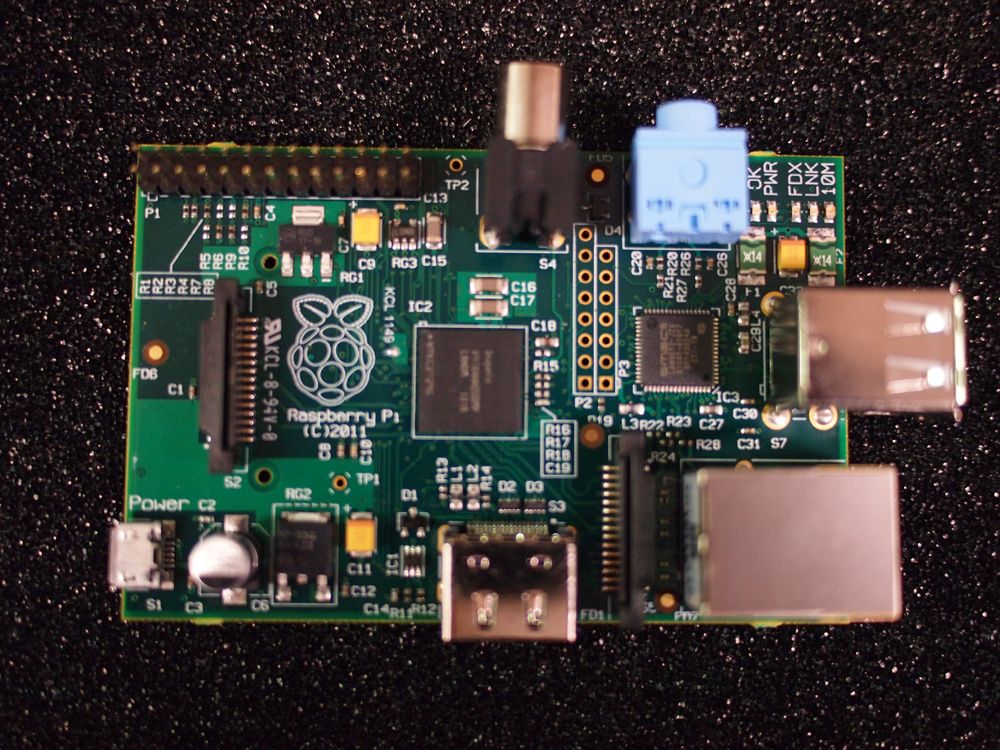Next Big Small Thing: Minicomputers under $200

Who says computers can't be cheap? For less than $200, a range of new devices allow users to surf the Web, create spreadsheets or documents, play games, screen HD video, and more. Although these minicomputers are small enough to fit in one's palm and lighter than a handful of nickels, they pack serious computing power. With a glut of high-cost computers on the market, these inexpensive gadgets are making it possible for anyone to own a computer.
The U.K.-based Raspberry Pi was one of the first minicomputers available for sale. Priced at $35, it is also among the cheapest.The Linux-powered device comes with 256MB of RAM, two USB ports, an HDMI port for connecting to any compatible screen, and that's it. Currently, the Raspberry Pi Foundation only sells the naked circuit board, so users will need to acquire a keyboard, mouse, monitor, and connector cables on their own before the Pi is operational.
"This is really a repackaging of an existing cellphone technology as a kind of desktop PC," said Eben Upton, co-founder of the Raspberry Pi Foundation. "We don't have a screen, we don't have the radio components of a cellphone, but we do have the processing, graphics and the display drive. Those are all small cellphone functions."
The bare bones Raspberry Pi has been wildly popular since launching in April, with the first run of 10,000 boards selling out within minutes. Currently, there are about 100,000 devices around the world from Saudi Arabia to Namibia (see maps), and for those looking to buy one now, there is a wait list.
Originally, Upton and colleagues at the University of Cambridge's Computer Laboratory envisioned the Pi as a way of exposing more children to programming. (The Pi requires some programming knowledge to operate.) With the decline in the number and quality of computer science students, they wanted to help reverse the trend by making a functional computer more affordable. To this day, Upton says, "The foundation's mission isn't to deliver a computer; the foundation's mission is to get more people programming."
While the Pi has made its way into the hands of a few teachers and students, its active adult maker/hacker community has used the device for everything from amateur radio to controlling robotics. The vibrant Raspberry Pi community engages in lively forums, produces its own monthly magazine, and has even started organizing monthly "Raspberry Jams," or meetings for hobbyists, developers and students to chat about the devices in the U.K. While the Raspberry Pi is easier to use with a programming background, it is not impossible for beginners to operate the devices. Through any of these community outlets, novices can get questions about setup and functionality answered.
"For me, to some extent, that was the most exciting thing about it. It's not the technology, it's the community around the devices. It's extremely exciting," Upton said.
Sign up for the Live Science daily newsletter now
Get the world’s most fascinating discoveries delivered straight to your inbox.
For those looking for a more intuitive device that does not require programming experience, other minicomputers, such as FXI's Cotton Candy ($199) and AllWinner's MK802 ($95), offer similar functionality. Just like the Pi, these devices can be used as on-the-go media players, Internet browsers, gaming machines or for general use. For the extra cost, users get a sleeker and smaller product (both are about the size of a USB stick). Plus, with 1GB of memory, both products offer about three times more RAM than the Raspberry Pi.
Despite the slight price and spec differences among minicomputers, they all offer the same potential: computing power that fits in your palm without having to empty your pockets.
This story was provided by InnovationNewsDaily, a sister iste to LiveScience. Follow InnovationNewsDaily on Twitter @News_Innovation, or on Facebook.












